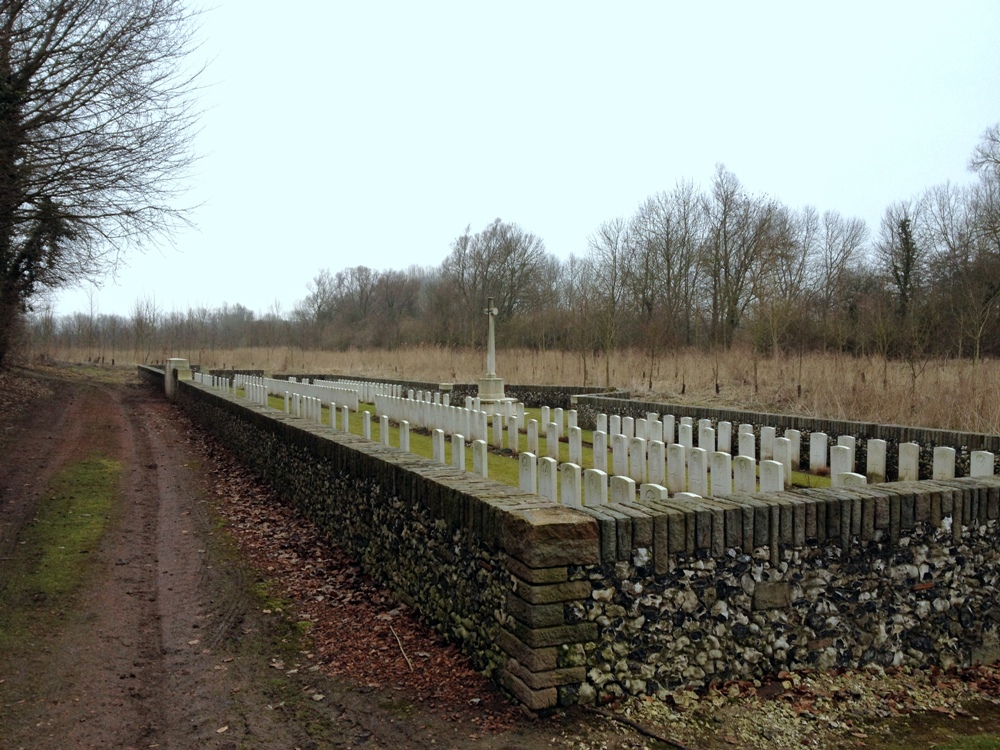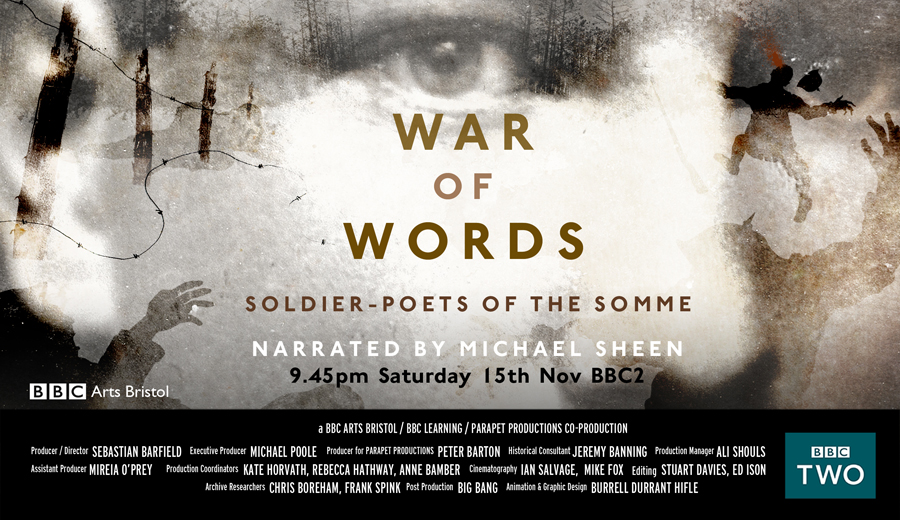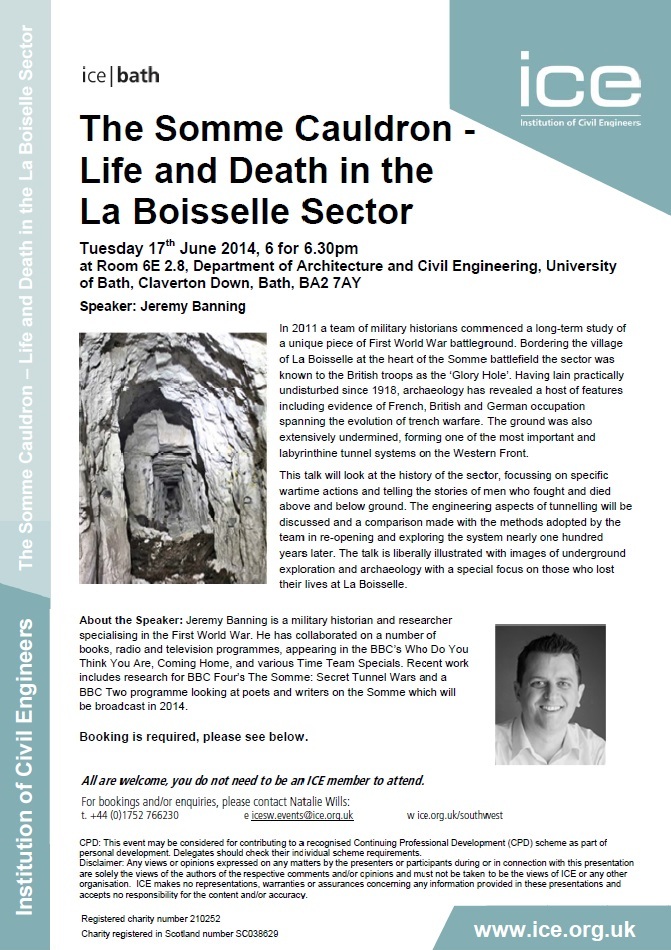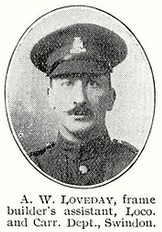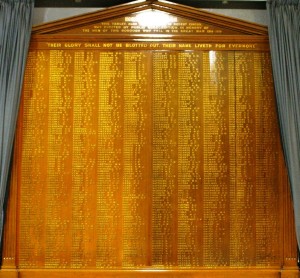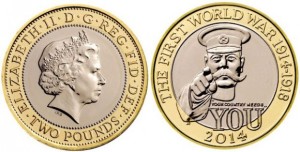Archive for 2014
A day of talks and workshops at Carshalton Boys Sports College
Prior to the armistice period and a subsequent battlefield trip to the Somme I spent a day at Carlshalton Boys Sports College. I had been invited there by History teacher, Julie Haunstetter.
What marked this day out over many of the other school visits I undertake was the commitment and interest shown by students. The school and history department had clearly vested a great deal of thought into the theme of remembrance in 2014 with one student Regan writing a heartfelt poem which has been added to a T-shirt to raise funds. This had been picked up by the BBC and Regan and a fellow student, Sam, had accompanied Julie Haunstetter on to the BBC Breakfast sofa.
For my November visit we had planned a full day with sessions looking at a variety of topics including enlistment, training and life in the trenches plus a session on tunnel warfare and our archaeological work at La Boisselle.
The most rewarding session was spent with higher ability students casting a critical eye over the use of sources. Over the past few years I have been horrified to hear and observe students simply relying on Google as a means to gather knowledge. I wanted Carshalton’s students to analyse why this was wrong and, as an example of flawed material, offered in a critical look at certain reference sources used in the writing of the Great War.
An obvious place to start was the British Official History (or to give it its full name, the History of the Great War based on official documents by direction of the Historical Section of the Committee of Imperial Defence). I explained the process in which versions had been compiled. Ongoing analysis has found many inconsistencies in these volumes. I was able to show the students examples of correspondence between officers and the official historian, James Edmonds, held under reference CAB45 at the National Archives, Kew. What soon became obvious to all was that no ‘Other Ranks’ were consulted whatsoever. The Official History is an officers view of the war. The rank and file had little or no input.
Even more telling was the date that volumes were published. The two volumes covering 1914 were published in 1922 and 1925. Those covering 1918, the year of victory, were published before and even after the Second World War! For Volumes IV & V this is nearly thirty buy xanax vietnam years after the events the books are chronicling. The drop in quality is clear to see and a study of the CAB45 records for 1918 show it was not always possible to rely on memories of ageing men. This prompted the students to think how best to write an accurate history.
Next, I gave examples of falsehoods and exaggeration in British war diaries. I have been lucky enough to have been privy to the research that my colleague Peter Barton has gathered from German archives over the last few years. What the research shows is revelatory. Many hours have been spent on telephone calls discussing and cross-referencing the inconsistencies between British and German records. Put simply, one cannot find the truth if one doesn’t use all available sources. The histories we rely on – official sources – are not corroborative history. German records have been neglected horrendously over the last century. I was able to offer examples of inconsistencies in British reports that were taken as the truth when a simple cross-reference check of the records of the German unit on the other side of No Man’s Land would have provided a much clearer story; in short, a corroborative history. I also talked of the ongoing public and media fascination with Ypres and the Somme at the expense of any other Western Front battle. It was certainly something that got students and staff thinking….
The day ended with an hours discussion and presentation on remembrance. Finally, I must say how brilliantly the Carshalton students behaved. They were a credit to the school and I look forward to the chance to visit again in the future.
Finally a moment to put down a few words to thank you properly for last Friday. Your series of talks were absolutely amazing. The students were spell-bound the entire time and captivated by everything you presented to them. I have never seen them sit so still for so long! Their knowledge has clearly been enhanced by all that you spoke of (I have already been challenged several times as to why we are not learning about Arras), and at the same time, you have increased their interest and passion for learning about the First World War. A fantastic day, which we all thoroughly enjoyed. Julie Haunstetter, History teacher, Carshalton Boys Sports College
Researching the war service of David Emanuel’s grandfather, John Leslie Emanuel, for BBC Wales ‘Coming Home’
In June I spent a day in Merthyr Tydfil filming with Yellow Duck Productions for their hit BBC Wales genealogy programme, ‘Coming Home’. Having worked with Yellow Duck on a previous series I was asked to research the wartime service of John Leslie Emanuel, grandfather to the fashion designer David Emanuel.
As was revealed in tonight’s broadcast, David never met grandfather who drowned in a tragic accident in December 1939. Whilst aware of his grandfather’s drowning, David had little knowledge of his wartime military service. We had a lucky start in that his grandfather’s service record survived. Using this and extant unit war diaries I was able to show David where his grandfather had served.
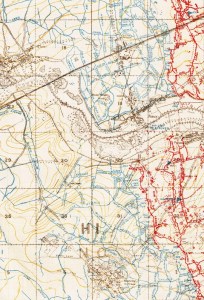
Trench map extract of the Roeux – Monchy area – positions occupied by 234 Machine Gun Company in summer 1917. Crump Trench runs just to the south of the railway line in the area west of the village of Roeux.
John Leslie Emanuel enlisted in February 1916 in the Sussex Yeomanry and proceeded to France in September of that year, joining the 10th Battalion Queen’s (Royal West Surrey Regiment). He soon transferred to 124 Machine Gun Company, spending six months on the Western Front, mostly in positions facing the enemy on the Messines Ridge. His active service was interrupted by his evacuation back to Britain, suffering from P.U.O. (pyrexia of unknown origin).
Four months later, having recovered, been promoted to Corporal and now serving with 234 Machine Gun Company, he again proceeded overseas. The unit war diary recorded the men swam in the sea off Le Havre (noting the water was warm!) before moving to the Arras sector. The Battle of Arras had ground to a bloody halt in mid May 1917 but isolated actions continued into the summer. The main British effort for summer 1917 was focused on endeavours in Flanders. However, this did not mean that 234 MGC had an easy time of it in Artois.

Extract from 234 Machine Gun Company War Diary 18 August 1917. Held at National Archives, Kew under Ref: WO95/1472/2 and reproduced with their permission.
The war diary is illustrative of the kind of routine and boredom of trench life but occasionally reveals periods of terror. 234 MGC was serving either side of the River Scarpe, providng support to the infantry occupying positions north of Monchy-le-Preux and in the village of Roeux, scene of bitter fighting in April and May. On 18 August an 8 inch German shell demolished a dug out near an anti-aircraft position in Crump Trench. Two of the occupants were killed outright but the machine gunners survived, despite being buried and badly shaken. A CWGC cemetery, named after Crump Trench now sits on the trench location.
A month later the company moved up to Flanders to take their part in the British offensive – the Third Battle of Ypres (Passchendaele). What struck me when looking at David’s grandfather’s story is that he was sent to a Corps rest camp for the entire period 234 MGC was in action near Langemarck. It is possible this period of rest was astonishingly good luck on his part. However, with the unit having undergone a fortnight’s training prior to their deployment north, it seems a strange time for a Corporal to be given leave. Detailed records are missing but it may have been that, after the rigours of the Arras sector, he simply needed a break. Despite popular modern misconceptions there was an appreciation of mental fatigue and it was understood that often men needed a rest away from the guns to recover. Put simply, no man whose mind was in a fragile state would have been of any use in the artillery war that dominated the Flanders battles. This omission may well have saved his life as the company inevitably took casualties when engaged in battle. Upon leaving Flanders 234 MGC returned to the Arras sector. In mid-December 1917 John Leslie Emanuel was sent back to Britain as a candidate for a commission. He never saw active service again, being discharged before the armistice.
David Emanuel gave an interview to Wales Online about his participation in ‘Coming Home’: http://www.walesonline.co.uk/whats-on/film-news/david-emanuel-war-hero-granddad-8149943
I have recently received the TX card for the upcoming BBC Arts documentary ‘War of Words – Soldier Poets of the Somme’. It will be shown on BBC Two on Saturday 15 November at 9.45pm.
The 90 minute documentary which I worked on as historical consultant in 2013 follows literary figures who took part in the Battle of the Somme.
The documentary, presented by Peter Barton and directed by Sebastian buy ambien online bluelight Barfield, has its own dedicated page containing information, Director’s notes and preview clips: http://www.bbc.co.uk/programmes/b04pw01r
BBC iPlayer has a dedicated page showing an anthology of animated poems using the work of Robert Graves, David Jones, Siegfried Sassoon, W.N. Hodgson and Isaac Rosenberg to relay the experiences of these poets during the battle. See http://www.bbc.co.uk/iplayer/episode/p02b11yw/the-somme-in-seven-poems
Preview of ‘War of Words – Soldier-Poets of the Somme’ at Bristol’s Watershed on 5 November 2014
I spent much of 2013 working as historical consultant for the upcoming BBC Two documentary ‘War of Words – Soldier Poets of the Somme’. A special preview is being shown as part of Bristol 2014 at the Watershed at 1800 hrs on 5 November. The 90 minute film will be shown in its entirety followed by a short break and then what we hope will be a lively panel debate. Panellists are myself, Peter Barton, the film’s director Sebastian Barfield, Richard van Emden and Jean Moorcroft Wilson. The evening is now fully booked.
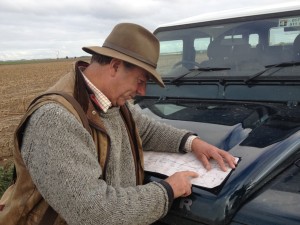
The film’s presenter Peter Barton at Regina Trench on the Somme. It was here that J.R.R. Tolkien, creator of Lord of the Rings and The Hobbit buy legit tramadol online served in October 1916.
The film follows literary figures who took part in the Battle of the Somme. As the film’s description notes “More poets and writers took part in the battle of the Somme than any other battle in history, among them Siegfried Sassoon, Robert Graves, David Jones, and JRR Tolkien. This new BBC film looks at how these men served in the same trenches, fought in the same attacks and wrote poetry and prose that has shaped the way people remember the Great War.”
Edit (4 November): I have now heard that broadcast date will be Saturday 15 November but have no TX Card or further details. I will update my website and Twitter feed when I know this.
Links:
http://www.watershed.co.uk/whatson/6193/war-of-words-soldierpoets-of-the-somme/
http://www.ideasfestival.co.uk/2014/events/bbc-preview-war-of-words-soldier-poets-of-the-somme/
http://www.bristol2014.com/whats-on/film-bbc-preview-war-of-words-soldier-poets-of-the-somme.html#.VE90sFfvZ8E
On Tuesday 17 June I will be speaking on “The Somme Cauldron – Life and Death in the La Boisselle Sector” at the Institute of Civil Engineering, University of Bath. Doors open at 6.00pm for a 6.30pm lecture start.
Full details can be found on the attached PDF flyer. Please click to open and download: Univeristy of Bath Flyer
Tickets are free – but limited in number – so please book ahead to ensure your attendance.
I recently spent the day giving a First World War workshop to Year 6 pupils at Orchid Vale Primary School in Swindon. During the morning I spoke about my job and the variety of roles I perform. After that brief introduction I spoke at length about the wartime life of a typical British soldier, kit, food and the daily routine of trench warfare. Having brought along some German barbed wire found last year when walking on the Somme, I was able to show them the length of the barbs.
“We had a fabulous day on the Friday you came in. Without a doubt, the children found your visit inspirational – so much so that many now want to be historians! You helped bring to life some of the things they had started to read about and helped to give them an understanding of concepts that are hard for children in Britain today to imagine, in a way that was engaging.” Fran Randall, Year 6 teacher, Orchid Vale Primary School
We then spent some time talking about local Swindon men who went off to war. Having used Mark Sutton’s excellent ‘Tell Them Of Us’ book all about Swindon’s war dead, I had identified a number of characters that I knew would interest the children.
One of these men was Second Lieutenant Frederick Wheatcroft, a Swindon town footballer who was killed at Bourlon Wood during the Battle of Cambrai in November 1917. Another was a former GWR employee, Arthur William Loveday who had won the first of his two Distinguished Conduct Medals in a daring raid on the German trenches at Ploegsteert Wood in December 1915. We also looked at Swindon men who had gone to Canada before war started as so fought in the Candian Army.
The afternoon was spent visiting Swindon’s main war memorial. On arriving at the Cenotaph at Regent Place the children all had a good look at the memorial, reading John McCrae’s famous poem ‘In Flanders Fields’. We then headed inside to the former Town Hall, now occupied by a dance studio.
Hidden behind curtains is the hugely tramadol rx purchase impressive wooden war memorial, listing over 900 of Swindon’s men who were killed during the war. The children were very keen to look up the names of the men that we had discussed earlier. They also found names that were familiar to them and we looked up their details in Mark Sutton’s book. Our visit concluded with the singing of wartime songs beefier we headed back to the school.
We all agreed it was a great shame that the memorial was hidden from public view. Fran Randall, the teacher who had invited me to Orchid Vale is Swindon born and bred and yet had no idea about the memorial. Ironically, the memorial was paid for by public subscription but is not available for the public to view. For more information about Swindon in the Great War follow @SwindonGreatWar on Twitter.
I had a wonderful day at Orchid Vale, spent with inquisitive children and friendly staff. I hope their interest in the war continues, in particular their efforts to help the campaign to find a more suitable place for the town’s magnificent war memorial to be displayed.
Below are some extracts from pupil’s thank you letters:
“I have turned over a new leaf in history! It used to be a little bit boring to me, now I love it All thanks to you.”
“Finding out about your job inspired me to become historian myself. You obviously have lots of fun being a historian because you get to do lots of incredible things such as working for the BBC.”
“I used to think history was boring but now have a different perspective on it.”
“My class and I really enjoyed your visit, especially the trip to the memorial showing us who passed away and how special they were. What inspired me was learning about your job and your presentation about the war.”
“Before going on the trip I was not that interested in history, listening to the facts about the First World War and all about your life is inspired me to learn more. I found it fascinating to learn all about how people lived in the past.”
“Your visit I believe, pulled a history trigger in all of us and I’ve noticed that history seems more interesting when you know about it.”
Did the media miss the important bit? The online release of First World War diaries from the National Archives
This week has seen the much awaited launch of the National Archives First World War diaries online from series WO95. For those of us who spend their time at Kew it is a welcome relief to have these documents available at the click of a mouse. With many documents out of circulation in order to be scanned over the past couple of years I have had a number of frustrating trips to Kew so I was pleased to hear the news. However, our wait is not over yet as it is only the three cavalry and seven infantry divisions which made up the original BEF from August 1914 which are online. Previously scanned diaries (many in black and white) have been removed. Revised full colour versions will be released online in the spring with the entire collection available by the end of the year.
 Strangely, the media confused these important operational unit war diaries with personal accounts. A small number of personal diaries can be found amongst the official records but there are not that many. Despite this, the BBC in particular, focused on relaying ‘newly released’ personal accounts. This missed the point and, to my mind, trivialised the importance of the announcement. I wonder quite what staff at the Imperial War Museum with their magnificent collection of diaries, memoirs and letters in the Department of Documents thought of this?
Strangely, the media confused these important operational unit war diaries with personal accounts. A small number of personal diaries can be found amongst the official records but there are not that many. Despite this, the BBC in particular, focused on relaying ‘newly released’ personal accounts. This missed the point and, to my mind, trivialised the importance of the announcement. I wonder quite what staff at the Imperial War Museum with their magnificent collection of diaries, memoirs and letters in the Department of Documents thought of this?
On Tuesday I gave an interview for BBC Radio 5live Drive in which I was asked to comment on a couple of readings from personal diaries that have been found amongst the newly digitised tranche. Each subsequent question focussed on what soldiers had to endure and, it being 5live, the importance of sport for soldiers. Only at the end of the conversation could I suggest I was asked about operational diaries and why they are so critical, not only to historians but also the general public and family members interested in finding more out about their forebears’ wartime service. It seems inexplicable that this confusion occurred.
I also gave an interview for Russian World Service which can be accessed below. During this I was asked what I thought would be the most important developments over the centenary period. Whilst having British war diaries available at the click of a mouse is wonderful, I firmly believe that it is only by using extant German primary source material that our understanding can grow. I sincerely hope the next four years sees a growing interest, not only in British records, but in a wider appreciation that much of the history written over the last hundred years has been done so using limited sources. As historians we want to find the truth, not a slanted or biased version of events.
Released alongside the British war diaries was an ambitious crowdsourcing project “Operation War Diary” which, it is claimed, will help us to unlock the data in our war diaries. Further details are available from a dedicated website: http://www.operationwardiary.org/. If it works and the data is fed back into the National Archives’ Discovery search facility it should be a great help. It will be interesting to see if the initial momentum is maintained over the centenary period. Hats off to the National Archives who should be congratulated on the digitisation process – 1.5 million pages is a lot of scanning. Now all we need is to get Germans interested in crowdsourcing and transcribing the millions of untouched pages of material in Munich, Stuttgart and Ingolstadt….
Lord Kitchener on the £2 Coin. Right or Wrong?
This morning I was invited to speak on BBC Radio Bristol on the subject of the new £2 coin to be issued by the Royal Mint. This coin depicts Lord Kitchener, Secretary of State for War, from his famous ‘Call to Arms’ poster from 1914 – ‘Your Country Needs You’. The Green Party are calling for Kitchener’s image to be removed in preference to one denoting peace. Their argument is that the use of this image glorifies war. See http://www.westernmorningnews.co.uk/Kitchener-2-coin-face-glorifies-war-say-Greens/story-20415940-detail/story.html
Removing Kitchener in preference to a design honouring peace would be a strange decision at this time. It is worth remembering the coin is one of five to be created in the period 2014 – 2018. It is hard to think of a more appropriate design to remember the events of one hundred years ago than this iconic image. Kitchener’s links to our colonial nineteenth century past are undeniable. However, it is not those events the coin is recognising. Neither is it celebrating the man himself, even though he did much to raise an army and organise sufficient munitions to prosecute the war effort. The design is a clear symbol of 1914 and the beginning of the war. I am sure that by 2018 the calls to have a design denoting peace will be strong but that time is not now.
The poster, one of the most iconic of the twentieth century, symbolises the Call to Arms in which men enlisted in the hundreds of thousands into what became the ‘New Army’ or ‘Kitchener’s Army’. That those men went off to various theatres of war to fight is undeniable; inevitably a proportion were killed or wounded in action. However, that is the reality of fighting a modern industrial war. It is a bloody, vicious, all encompassing process which the entire country is part of. As such, large scale casualties are inevitable. Men’s enthusiasm to enlist (for a myriad of reasons and not simply patriotism) and duty ensured the British, for so long reliant on the Royal Navy, could form an army of sufficient size to fight the Germans in continental Europe.
I have read suggestions that an image of Harry Patch be used on the coin as an alternative. Harry was the ‘Last Fighting Tommy’ and won a place in the hearts of many around the world due to his passionate advocacy for peace. I was lucky enough to know him well, looking after him on his pilgrimages back to Flanders. However, whilst he was the last survivor of the trenches, the question remains, was he symbolic of the way that all old soldiers thought? Not at all. As hard as it may be for us to stomach, many of those who went to war enjoyed it, revelling in the experience; the camaraderie, regular food, exercise and the chance to escape their humdrum or dangerous industrial civilian life. These men would never live their life in the same way, never living on the edge again. It would be wrong to say that all soldiers thought like this but, neither did all men who fought share Harry’s views. With millions of service personnel it is inevitable there were many different views. So, would it be a good idea to have Harry on a coin? Only if his views mirror those of every serviceman and woman who did ‘their bit’. Clearly, they do not.
What we are talking about here is a coin – one of five to be created over the next five years. Does it remind me of ‘jingoism’ and the dark days of British colonial expansion? No. It brings to mind 1914 and the mass enlistment of a new army. The irony is that in many ways I am ambivalent to it. It is a coin, that is all. I doubt many could say what image adorns the loose change rattling in their pockets or purses. However, unless a brilliant new design is pushed through that strikes a particular chord then I’ll be happy to go with Lord K and his Call to Arms. If I ever get to see one in my change then my first reaction will probably be to think of that wasted morning I spent talking and writing about it. Which brings me on neatly to my next point….
Like many who spend their life researching and learning about the First World War, either guiding on the battlefields, researching in archives or speaking to schoolchildren I am increasingly disheartened by the events of the first week of 2014 which has seen an ugly war of words between various political parties. I am not alone in finding these arguments, started by Michael Gove in his Daily Mail article, unedifying. Clearly, the centenary offers a perfect opportunity for political parties of every persuasion to have their say on upcoming events, using it for their own political benefit. Making cheap political capital out of this period is opportunistic but, sadly, unsurprising. With the social and economic injustices in this country haven’t we more pressing issues in this country for politicians to deal with?
For many of us with a deep-seated and long-standing interest in the war the focus will remain the men who served, their families who remained at home and that legacy – that is what is important, not political jousting and ‘what if’ history. It is sad to say but after just ten days of the new calendar year I am already looking forward to 2018 and the lessening of media and political interest. At this rate, it cannot come too soon.
The discussion on the Steve Le Fevre BBC Radio Bristol Breakfast Show can be heard via iPlayer for another seven days HERE. The piece starts from 1:49.20 in.
 In early November I spent a week working at Shrewsbury International School in Bangkok, Thailand helping explain many aspects of warfare on the Western Front from 1914-1918. In particular, my task was to enhance and deepen students understanding of the war and the impact it had on individual soldiers, society and the implications for the wider world. I was also keen to show the importance of detailed historical study by using examples of my research. One special request was to hear of our archaeological and genealogical work at La Boisselle as an example of specific, detailed research. During a fascinating week I spoke to 800 students from the Year 6 Juniors through to A Level students in Years 11 and 12 (KS2 – KS6).
In early November I spent a week working at Shrewsbury International School in Bangkok, Thailand helping explain many aspects of warfare on the Western Front from 1914-1918. In particular, my task was to enhance and deepen students understanding of the war and the impact it had on individual soldiers, society and the implications for the wider world. I was also keen to show the importance of detailed historical study by using examples of my research. One special request was to hear of our archaeological and genealogical work at La Boisselle as an example of specific, detailed research. During a fascinating week I spoke to 800 students from the Year 6 Juniors through to A Level students in Years 11 and 12 (KS2 – KS6).
The majority of my time was spent working with students and staff in the History Department. Subjects ranged from my role as a historian through to elaborating on some of the archaeological projects I have been involved with over the past few years. A recurrent topic was our archaeological project at La Boisselle. However, my main task was to provide a basic understanding of a ‘typical’ British soldier on the Western Front. Beginning with the enlistment process I was able to provide details on uniform and kit and training in the UK before deployment to France. From the first experience of going into trenches I elaborated on daily trench routine, food, ration parties, medical arrangements and working parties.
“Our students are still buzzing and I’m hoping we see some of their enthusiasm convert into bigger numbers at AS and IGCSE level.” Stuart Howard, Head of History
Whilst the majority of time was spent working with History students I also spoke with those studying English. The curriculum covers the works of Wilfred Owen and I was asked to put his experiences and poetry into some form of context within the war. I was aided greatly with this by my work over the last year on an upcoming BBC Two television programme ‘Writers of the Somme’ which tells the story of the battle through the experiences and words of the poets and writers who took part.
The highlight of the working week was speaking on the theme of remembrance to 650 students in the Senior School assembly. During my week at Shrewsbury International School I was enormously impressed with the children’s enthusiasm, grasp of the subject and inquisitive nature and desire to find out more.
“We thoroughly enjoyed having you here and would love to plan another visit next year. The students and staff loved your talks and I think what worked so well was that you talked to and with the students, rather than at them. I felt that you pitched it all perfectly.” Kathy Wallace, Head of English
“During the week, Jeremy spoke to over 800 students ranging in age from 11 – 18 years old predominantly about aspects of the First World War needed for their studies. He was able to describe in detail the day to day routines of soldiers and their officers, the brutality of war and its legacy. His detailed knowledge of the topic and individual soldiers stories meant he was able to personalize the experiences of the men and their families. Jeremy also spoke in detail about the ongoing project at La Boisselle which was fascinating and incredibly moving.
His visit coincided with Remembrance Day and Jeremy took a Senior School assembly (650 students) focusing on 3 individual stories encapsulating the war. Students and staff were captivated as he shared the stories of a 16-year old boy soldier, 98-year old Lily Barron, whose father was killed on the Western Front when she was 5 years old and Hugh Dennis’s grandfather (BBC ‘Who Do You Think You Are?’)
Many of our students thought a First World War military historian would be old and boring. Jeremy certainly rapidly dispelled this idea by describing how he had worked in a number of jobs before following his passion of military history, how he researches for television companies and for families from all over the world with relatives that served in the war.
The interest created amongst staff and students alike was astonishing and testament to Jeremy’s deep subject knowledge, sensitive, professional delivery and approachability. His visit helped enthuse a new generation to the importance of history and how valuable and rewarding military research is. Our students undoubtedly gained a huge amount of knowledge and, most importantly, a deeper and more empathetic understanding of the First World War.
We cannot wait for his return in November 2014.” Sally Weston (Assistant Principal) Prep
After a week’s work at the school I spent the weekend based at Kanchanaburi on the Thailand-Burma Railway (Death Railway) visiting the war cemeteries, exploring cuttings in the jungle and looking into tragic events of another war. My ten days away was challenging, exhilarating and deeply moving. My sincere thanks to students and staff for their help with the week. I am already looking forward immensely to my return to Bangkok in the autumn.
I provide a variety of talks and workshops for schools. Please see my dedicated page for further details: https://jeremybanning.co.uk/schools-talks-and-battlefield-visits/.



